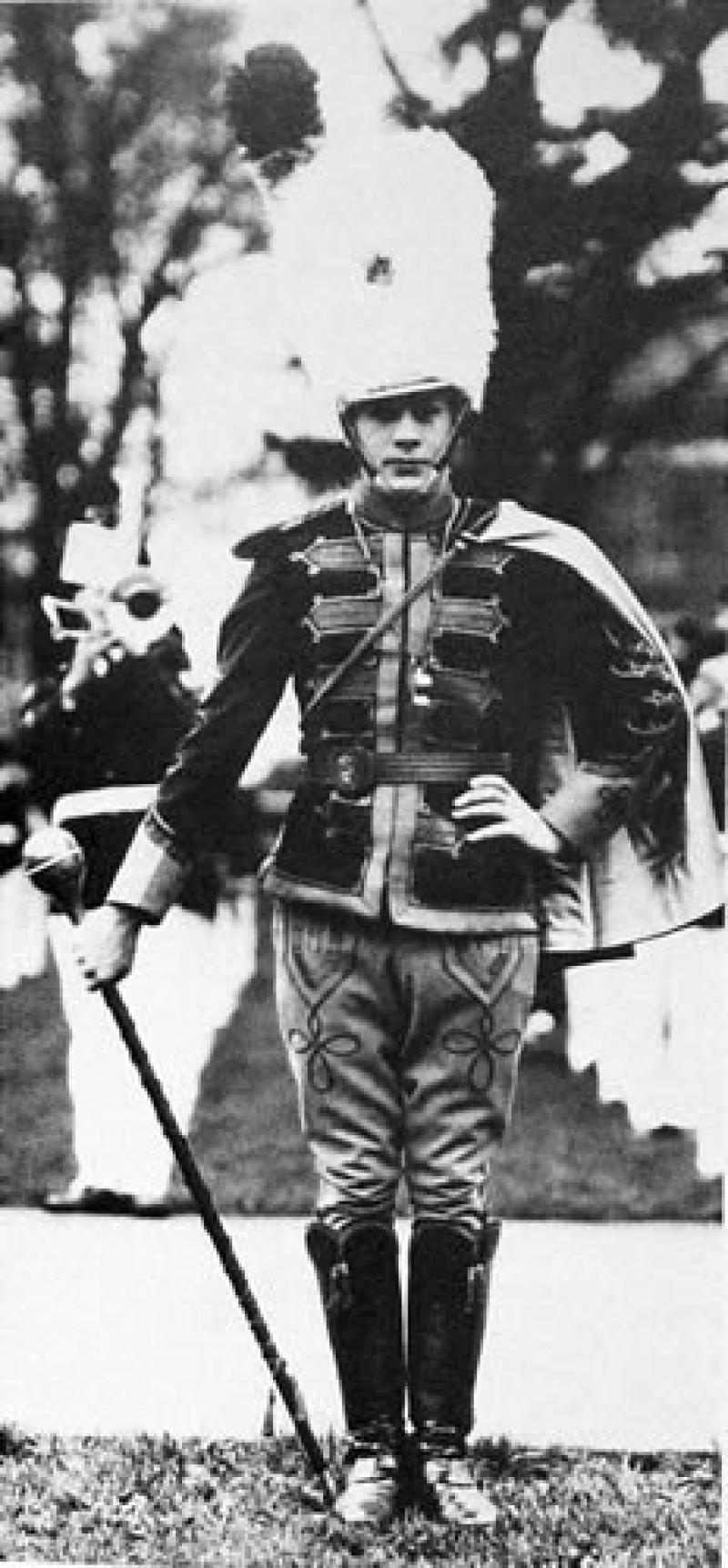
Hines was quick to learn the rudiments of the baton, although it was difficult to master the techniques of showmanship, under pressure, in a short period of time. All OSU drum majors performing in the Stadium drop their batons, and Hines was no exception. He is credited with the first high toss — whether or not he caught it every time is inconsequential; he was the first. Bill Knepper (OSUMB 1928-30) commented, "Bob could do a lot of the same kind of twirling that we did during my period and on through Wes Leas (OSUMB 1936), but he couldn't do it on the field. He would get nervous and drop the baton. When he dropped it once, he went the whole length of the field without even picking it up ... It broke his heart. But anyhow he was excellent on the handling of the baton."
George Bonn, recalling an eventful day in the life of Bobby Hines, said, "OSU played Columbia, I believe, in 1926 at the Polo Grounds in New York City. At that time we not only had a marching band unit, but we also had a bugle corps. Bob Hines was the drum major and Dr. Elvin F. Donaldson was the band coordinator. In other words, he was the fellow who shot the pistol signaling the sequence of the various marching events."
"As I recall it, the engineering department had worked out a complicated marching maneuver which called for the band starting at one end of the field and the bugle corps at the other end, and at the point of consolidation a rather tricky maneuver was to take place. Somehow or other it appeared that sequences were fouled up, and what ensued impressed us, as participants, as being somewhat a mess from which we could never recover. But we did recover."
"I remember so well Hines returning to the bench after the halftime festivities were finished sobbing, crying and upset because he was under the impression that he was the cause of a terrible disaster in what was then the showplace of eastern sports. Much to our surprise, amazement and satisfaction, I might add, the New York Times credited the band and bugle corps the next day for not only marching better than the West Point cadets, but for having executed a very exciting and interesting maneuver, the like of which had never been seen before at the Polo Grounds! So what appeared to some of us as a disaster turned out to be a very acceptable spectacle, even though it didn't follow the script," Bonn said.
Hine's talents far exceeded his role of drum major. What really occupied his mind was theatre. That same year he had written and produced a play, "It's Too Bad", for the Scarlet Mask Club on campus. In this show he wrote a musical score, played a leading part and sang a solo number. The show appeared at the Hartman Theatre in Columbus, February 3, 4, 5, 1927. The following year Hines co-authored "Oceans of Love", a musical production.
